Larrabee


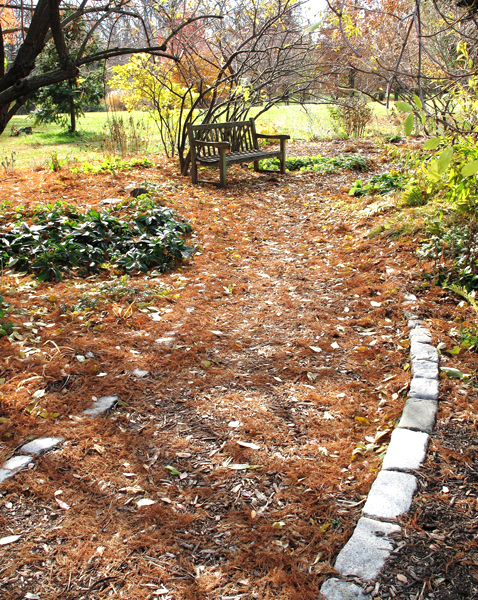
The Larrabee garden is named for Barbara Larrabee . This space honors her extraordinary volunteerism. The garden demonstrates massed perennial plantings with year round seasonal interest. With much of the structure of this garden made up of trees in our collections, the ground plane can be thought of as planted in a manner flattering to trees. Keep an eye out across seasons for the transition of ostrich ferns ( Matueccia struthiopteris ) unfurling their fiddleheads in spring and splaying their spore laden “ostrich feathers” in winter. Fall boasts a show of blackberry lily (Iris domestica ) seed heads and monkshood ( Aconitum sp. ) flowers. Finally Track the growth of our Coral Bark maple ( Acer palmatum ‘Sango Kaku’ ) in the winter when it’s new red growth stands in contrast to the Japanese cedar ( Cryptomeria japonica ) planted behind. Most visits are best spent seated on the internal bench peacefully viewing Cylbun’s only water feature.
Nathans



The Nathans garden is named for Daniel Nathans, Nobel Laureate in Physiology and/or Medicine in 1978. The space and bench commemorates his life. This garden demonstrates options for planting in both shade and part sun conditions. This garden rolls from Clyburn’s best winterberry holly ( Ilex vertcillata ) display in winter to a fantastic spring sequence beginning with Viburnum ‘Dawn’ (Viburnum x bodnantense ‘Dawn’ ) and ending with a scented poet’s daffodil ( Narcissus poeticus ) and Cylburn’s largest blooming mass of hellebores ( Helleborus x hybridus). Two well sited Japanese maples provide great fall foliage displays, while summersweet shrubs (Clethra alnifolia ) and Palibin lilacs ( Syringa myeri ‘Palibin’ )provide summer scents. However, the biggest draws for this garden include the gazebo, prized for marriage proposals and photoshoots, and the striking root flare of Cylburns Dawn Redwood (Metasequoia glyptostroboides ). One very special feature to us is Mrs. Joanne Nathans herself, who spends many hours helping us care for the garden.
Worthley

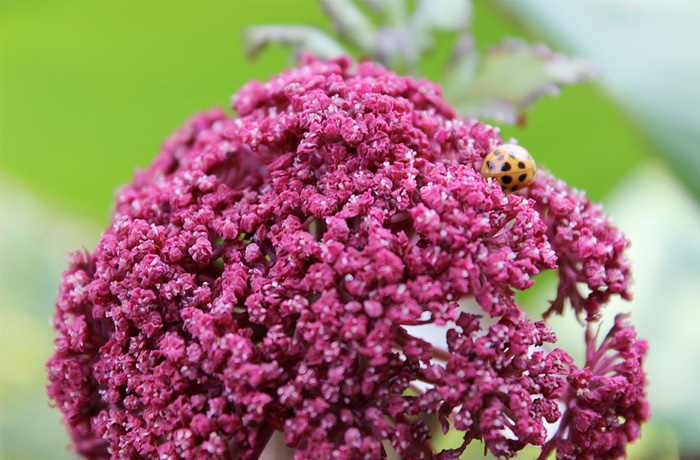



The Worthley garden is named for local botanist Elmer Worthey and commemorates his devotion to plant collecting. This garden is a collector’s garden dedicated to complementary plantings of many different plants in small quantities. One of Cylburn’s oldest Boxwood trees (Buxus sempervirens), a small collection of dwarf trees and shrubs, and a suckering mass of Doghobble (Leucothoe populifolia) comprise the bones of this garden. A sedum berm replete with cactus (Opuntia humifusa) masses and self- sown flowering annuals make up the foreground of this garden while the backside of the garden is dedicated to grasses and prairie plants. This garden even features a hardy banana plant (Musa basjoo).
Mansion Circle



The Mansion Circle garden was conceived in response to the loss of a very large walnut tree located within the circle. Designed as a connector between the Mansion front beds and the gardens downslope, the Mansion Circle can be thought of as a sunny perennial border of varying depths. Spring begins with ephemeral bulbs and dwarf fothergilla (Fothergilla gardenii) giving way to irises, allium, and poppies. By summer, most of the sun loving perennials are in full display. At this time, the lawn half of the circle boasts a canopy of pink blooms as the Crape myrtles (Lagerstroemia indica ‘Sioux’) begin their weeks long bloom cycle. Fall is marked by late blooming tender salvias and the brilliant foliage of the Arkansas bluestar (Amsonia hubrichtii). Come in any season and sit within the stone niche located along the sole garden path. This garden in particular offers striking winter perennial structures like stalks and seed heads.
Mansion Front



Ryer
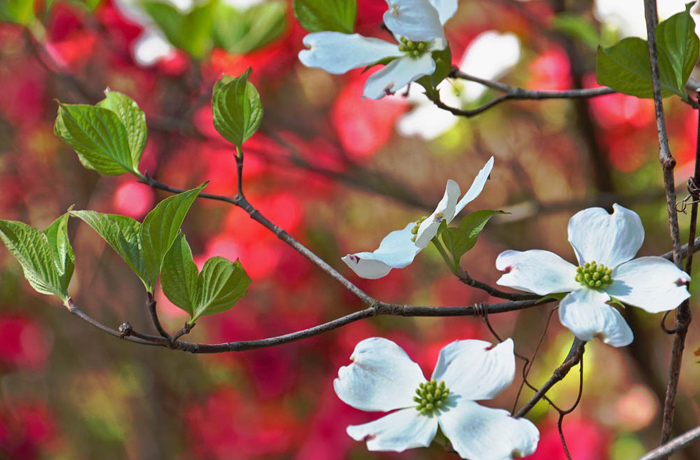
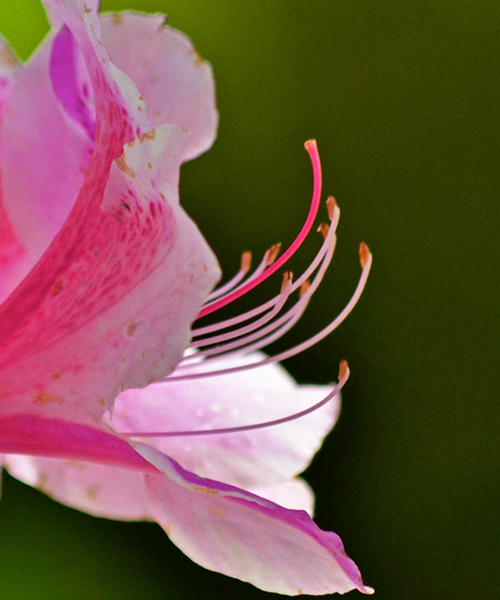
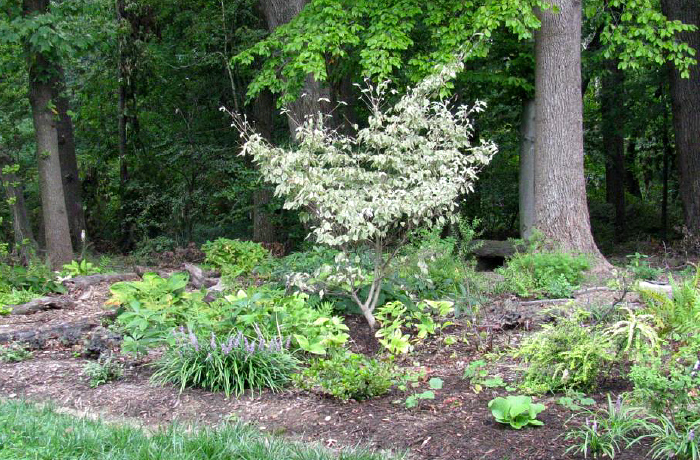
The Ryer garden commemorates Nancy Ryer, an avid gardener and Baltimore resident. While a little off the beaten path, this garden is idyllically nestled into the woodland edge. The garden is bound on either side by many of Cylburn’s azaleas. Combined with an understory layer of variegated dogwoods (Cornus kousa ‘Wolf Eyes’), this makes for a wonderful springtime destination while visiting the arboretum. When visiting the Ryer garden, be sure to locate the stone bench. This bench offers a sheltered view from the garden out toward the collections beyond. Keep an eye out for oyster shells and fairy gardens created annually by the Ryer family who still tirelessly helps maintain the space.
